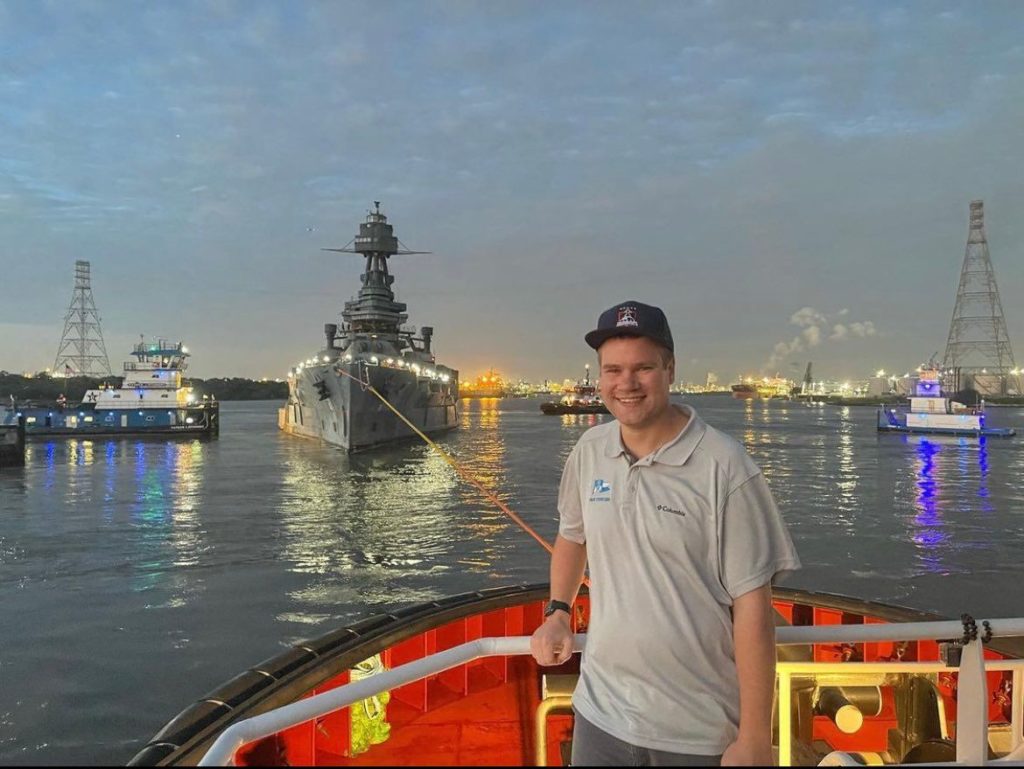A battleship that was active during World War I and World War II departed from its post near Houston to Galveston for extensive repairs. The ship’s journey also has a neighborhood connection.
Pearson Smith, a 2010 LHHS grad, helped with the USS Texas (also known as The Battleship Texas) departure last week. Smith, who has been in the field for eight years, is chief engineer on the Cecil M. tug, which helped pull the ship to its new destination for repairs.
“Typically on a ship the Chief Engineer tells the engine department what to do and does all the paperwork, but in my situation, I’m the only engineer on the boat of a four person crew,” Smith says. “So I do everything. Whenever something breaks, I have to fix it but if the problem is bigger than I can handle, I call the Port Engineer for shoreside support.”
The Cecil M. is a new tug built in 2020 and owned by Bay Houston Towing Company. As the newest tug in the fleet, it was deemed the most capable for pulling the battleship.
The maximum speed on the tug is about 11 knots, which roughly translates to 12.6 miles per hour. Smith says his team pulled the battleship at 4 knots, which is about 4.6 miles per hour.
“The Battleship had sat for over 30 years at San Jacinto Battlegrounds, so over time mud built up around the hull. All that mud had to be dredged out so that the ship could easily be pulled out of its berth. The challenge we thought we were going to face was pulling the ship out of the mud, but it moved out with little effort.”
The USS Texas was decommissioned in 1948 after being used in both world wars and was repurposed as a floating museum at San Jacinto Battleground State Historic Site near Houston.
The battleship’s repairs are expected to cost $35 million and will take up to 12 months to finish. When it’s all done, the ship will be at a new site and reopened to visitors.
“Wherever it may end up, I urge anyone reading this to visit the battleship or go see it out on dry dock. The best view is from Pier 21. It’s the last Dreadnought class battleship in existence, built two years after the Titanic.”
You can view the full departure of the ship in the video below.






